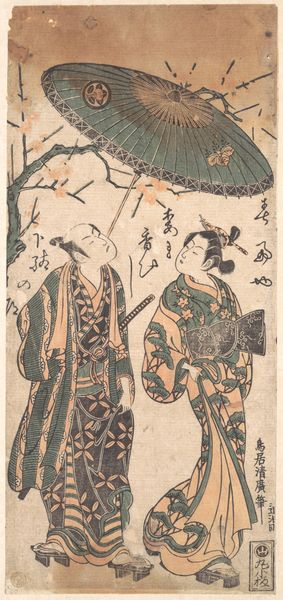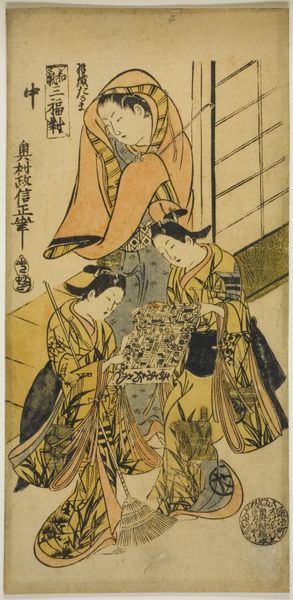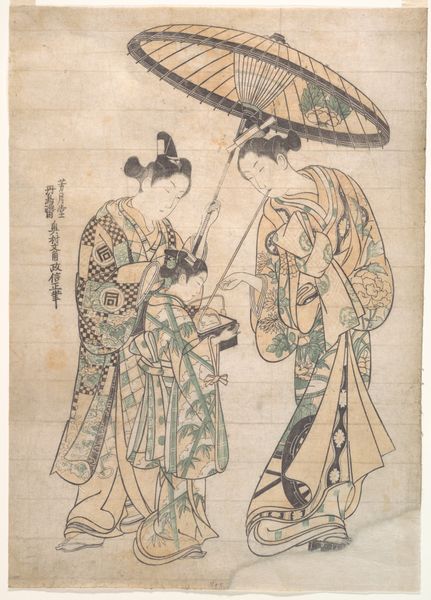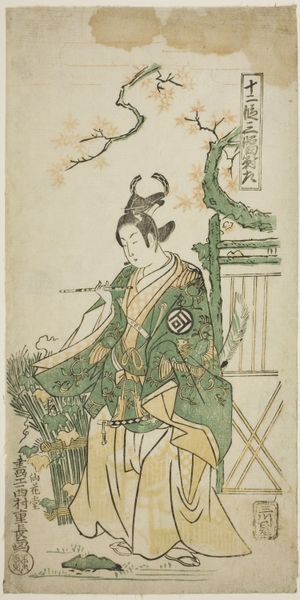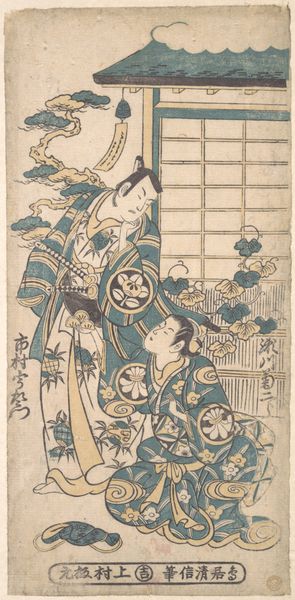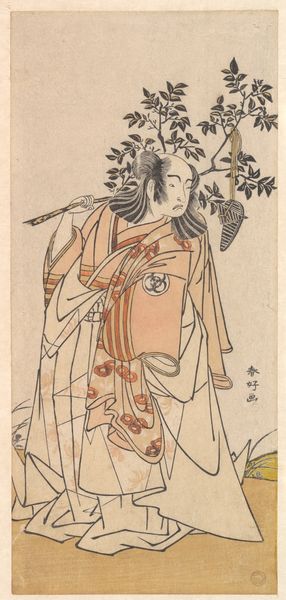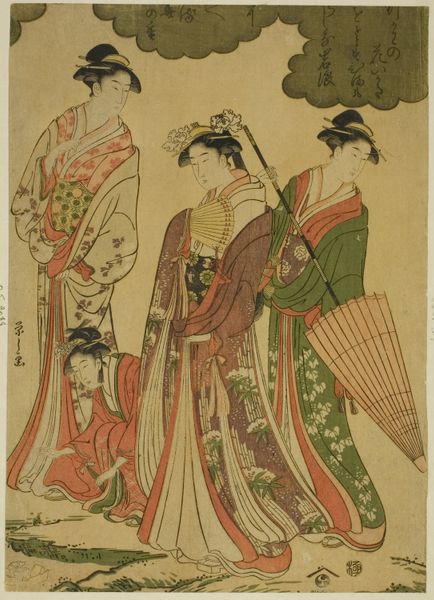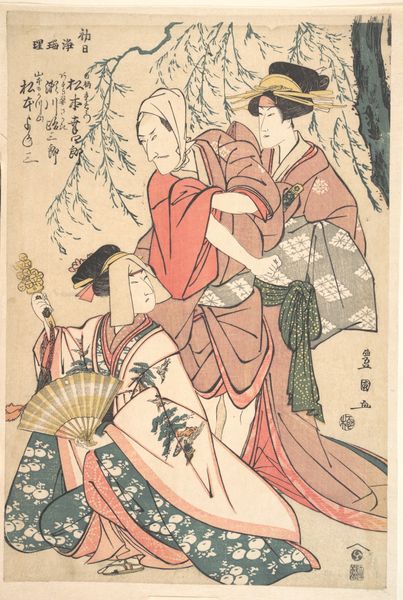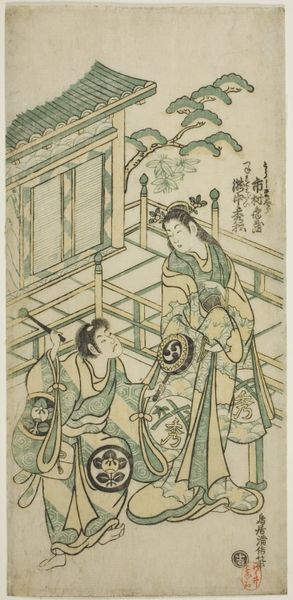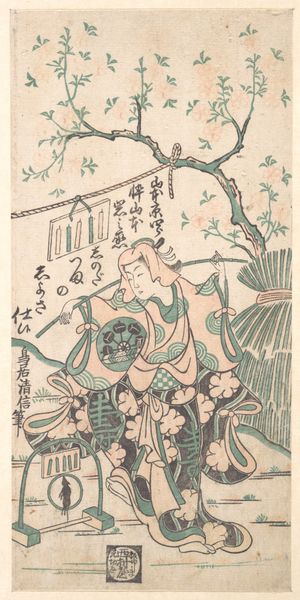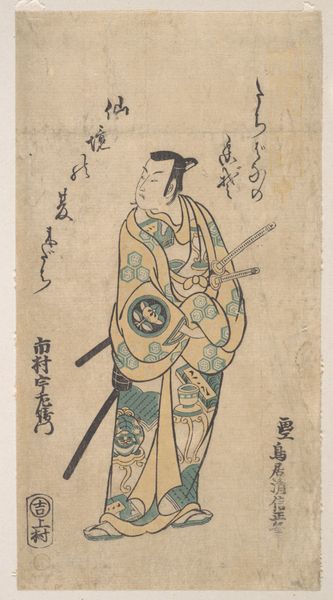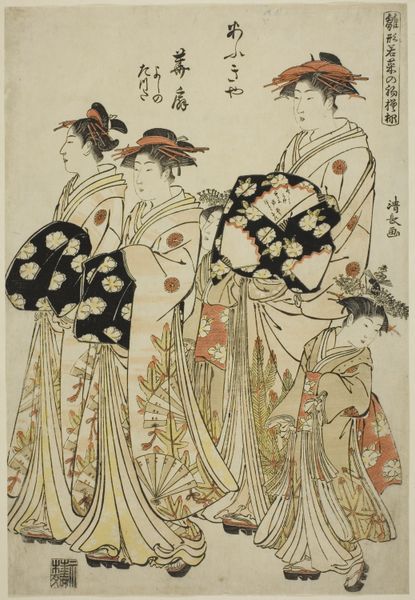
The Actors Ichimura Uzaemon VIII as Onio Shinzaemon and Onoe Kikugoro I as the courtesan Usugumo in the play "Nanakusa Wakayagi Soga," performed at the Ichimura Theater in the first month, 1744 1744
0:00
0:00
print, woodcut
#
ink drawing
# print
#
asian-art
#
ukiyo-e
#
figuration
#
woodcut
#
genre-painting
Dimensions: 12 5/16 × 5 7/8 in.
Copyright: Public Domain
Curator: Here we have a print by Torii Kiyomasu II, dating back to 1744. It’s a woodcut titled "The Actors Ichimura Uzaemon VIII as Onio Shinzaemon and Onoe Kikugoro I as the courtesan Usugumo in the play 'Nanakusa Wakayagi Soga,' performed at the Ichimura Theater in the first month, 1744." Editor: Immediately, the pale greens and intricate patterns draw me in. It feels so… fragile, like a memory. The arrangement of the figures also has a lovely asymmetrical quality that feels very dynamic. Curator: Indeed. Kiyomasu II belonged to the Torii school of artists, who were known for their distinctly bold and energetic style, often celebrating the world of kabuki theater. This print serves as a promotional image or playbill of sorts. Editor: Ah, so this image served a dual role – artistic expression and commercial advertising? That makes it very relevant to how we think about public art, and visual representation, particularly in its representation of gender at the time, doesn't it? Curator: Precisely. Prints like this played a key role in popularizing actors and plays. This particular example depicts a scene from "Nanakusa Wakayagi Soga," offering us a glimpse into the roles and personas these actors embodied. The setting is the Ichimura Theater, a significant cultural hub during the Edo period. Editor: It's striking how the composition elevates Ichimura Uzaemon VIII; there’s an unmistakable power dynamic. The positioning of the courtesan and musicians underscores a clear hierarchy within this theatrical portrayal. Does this artwork reflect real-world social roles and norms from the period? Curator: Very likely. The Tokugawa shogunate, and social structures it reinforced, regulated many facets of life. Theatre offered an avenue to explore such themes. Editor: It makes one think about what type of performances were acceptable. If social critique or alternative ideas could have ever reached public approval. Still, it shows just how prints like this one circulated and helped the audience digest and contextualize kabuki performances. What can be revealed by further study on Kiyomasu II’s decision-making when portraying such personas? Curator: An intriguing angle for scholarship to be sure. His mastery helped cement not just an important event, but also popular ideas of class and gender in society at large. Editor: Yes, an artist choosing how to visualize society; a thought that still affects image culture today! Curator: Absolutely. This piece from the Art Institute provides a wealth of context. Editor: A moment frozen, pregnant with meanings still unfolding centuries later.
Comments
No comments
Be the first to comment and join the conversation on the ultimate creative platform.
